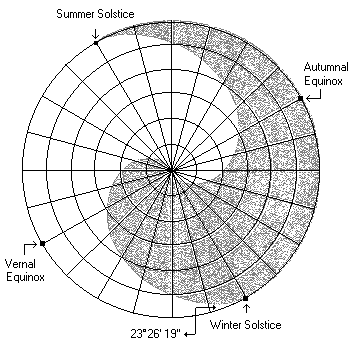
Qigong and Tai Chi Classes
Classes begin on Monday, January 13th
The class is from 5pm to 6pm
Every Monday at
The Rocky Mountain Miracle Center
1939 S. Monroe St. Denver, CO 80210
Suggested love offering of $10
All donations are purely voluntary
and go directly to the Center

Free Qigong and Tai Chi Classes
Classes begin on January 9th
at the
Senior Service Center
846 East 18th Ave.
Denver, CO 80218
Classes are held on Thursday Mornings and begin at 9:30am
This video shows the Yang-style Tai Chi form and various Qigong forms. Injoy.
Class Breakdown
Tai Chi movements are intended to balance the flow of Chi (Qi) in the mind as well as the body. These movements use the whole body and are performed slowly, with concentration on breathing and inner stillness.
Regular practice of Tai Chi has been shown to improve balance control, fitness, flexibility, in addition to relaxing the mind and filling the spirit. Tai Chi has evolved over centuries as a means of alleviating stress and anxiety. It is a form of moving meditation that provides serenity and inner peace.
Marc Kaplan has developed a ten-week series designed specifically for beginners called Golden Treasures Tai Chi. It allows for students to build on each week and for students to drop in at any time during the learning cycle. The class runs one hour and includes a gentle warm up, Qigong postures and Yang-style Tai Chi.
The hours breaks down as follows:
5 minutes for an Opening Prayer for Universal Peace and Introductions
5 minutes toes to head warm up
10 minutes of qigong
10 minutes of moving meditation
25 minutes of tai chi form instruction
5 minute of ohm chanting sitting silent meditation
Tai Chi Curriculum
Warm Up
Ankle Circles
Knee Circles
Hip Circles
Kidney Arm Swing
Shoulder Rolls
Neck Turns
Eye Rolls
Face Massage
Qigong
Monk Holding a Pearl
Embracing the Moon - Wu Chi
Wu Chi Expansion
Lifting Water - Wavy Hands
Prayer Wheel
Opening Step
Tai Chi Walk
Tai Chi
Opening Step
Lifting Water
Embrace the Moon
Stroking the Wild Horse’s Mane - Ward Off Left
Embrace the Moon
Stroking the Wild Horse’s Mane - Ward Off Right
Roll Back
Press
Gather
Push
Wave Hands like Clouds
Single Whip
Benefits of Tai Chi - Harvard Medical School
https://www.health.harvard.edu/staying-healthy/the-health-benefits-of-tai-chi
Tai chi is often described as "meditation in motion," but it might well be called "medication in motion." There is growing evidence that this mind-body practice, which originated in China as a martial art, has value in treating or preventing many health problems. And you can get started even if you aren't in top shape or the best of health.
In this low-impact, slow-motion exercise, you go without pausing through a series of motions named for animal actions — for example, "white crane spreads its wings" — or martial arts moves, such as "box both ears." As you move, you breathe deeply and naturally, focusing your attention — as in some kinds of meditation — on your bodily sensations. Tai chi differs from other types of exercise in several respects. The movements are usually circular and never forced, the muscles are relaxed rather than tensed, the joints are not fully extended or bent, and connective tissues are not stretched. Tai chi can be easily adapted for anyone, from the most fit to people confined to wheelchairs or recovering from surgery.
A growing body of carefully conducted research is building a compelling case for tai chi as an adjunct to standard medical treatment for the prevention and rehabilitation of many conditions commonly associated with age. An adjunct therapy is one that's used together with primary medical treatments, either to address a disease itself or its primary symptoms, or, more generally, to improve a patient's functioning and quality of life.
Belief System
You don’t need to subscribe to or learn much about the roots in Chinese philosophy to enjoy its health benefits, but these concepts can help make sense of the approach.
Qi is an energy force thought to flow the the body, tai chi is said to unlock and encourage the proper flow of qi.
Yin and Yang are opposing elements thought to make up the universe that need to be kept in harmony. Tai Chi is said to promote this balance.
Some Physical Benefits include:
Muscle strength. Tai chi can improve both lower-body strength and upper-body strength. When practiced regularly, tai chi can be comparable to resistance training and brisk walking.
Flexibility. Tai chi can boost upper- and lower-body flexibility as well as strength.
Balance. Tai chi improves balance and, according to some studies, reduces falls. Proprioception — the ability to sense the position of one's body in space — declines with age. Tai chi helps train this sense, which is a function of sensory neurons in the inner ear and stretch receptors in the muscles and ligaments.
Benefits of Tai Chi for Physical and Mental Health
Some Mental Benefits include;
-
Reduce stress, anxiety and help to relieve mild depression
-
Improv your mood and enhance psychological well-being
-
Improve your sleep quality and reduce insomnia
-
Help to improve cognitive function
-
Reduce loneliness and isolation
-
Improve emotional well-being and assist people experiencing post-traumatic stress disorder.
I'm a paragraph. Click here to add your own text and edit me. It's easy.

